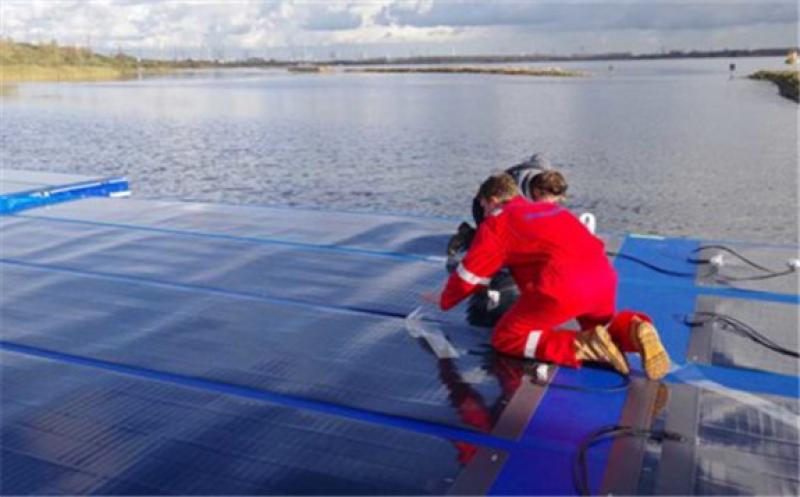A consortium led by Dutch research institute TNO has launched a new project to study floating flexible solar energy systems as part a project to create economically viable offshore solar farms.
 Installing the flexible floating panels. Photo: TNO Read more at DutchNews.nl:
Installing the flexible floating panels. Photo: TNO Read more at DutchNews.nl:
The flexible floating units have been installed in the Oostvoornse Meer lake, near the Maasvlakte industrial area.
The pilot, which will run until summer 2022, will look at the energy yield, the behaviour of the floating units when faced by waves and strong winds, the growth of organic material such as algae, and if they are viable economically.
‘Solar power at sea… does not yet actually exist,’ said TNO research and project manager Wim Soppe. ‘It is technically very challenging to install large floating systems with solar panels at sea and keep them operational for decades.’
One problem is the cost of the material used for heavy, rigid floats. The new concept, says Soppe, ‘requires a lot less material and we therefore have high hopes that it will turn out to be a lot cheaper.’
The trial consists of two floats measuring seven metres by 13 metres and topped by 20 kWp of solar panels. Both the solar panels and the floats are made of a flexible material developed by the consortium. This means the floats and panels bend with the movement of the waves and offer less resistance.
After completing this project, the next step is to build and install a trial system on the North Sea, TNO says. After that, the team hope that by 2024 they can build a commercial system linked to one of the wind farms already producing electricity offshore and filling the space between the turbines.
The research is part of the a government backed project to develop solar power on water.